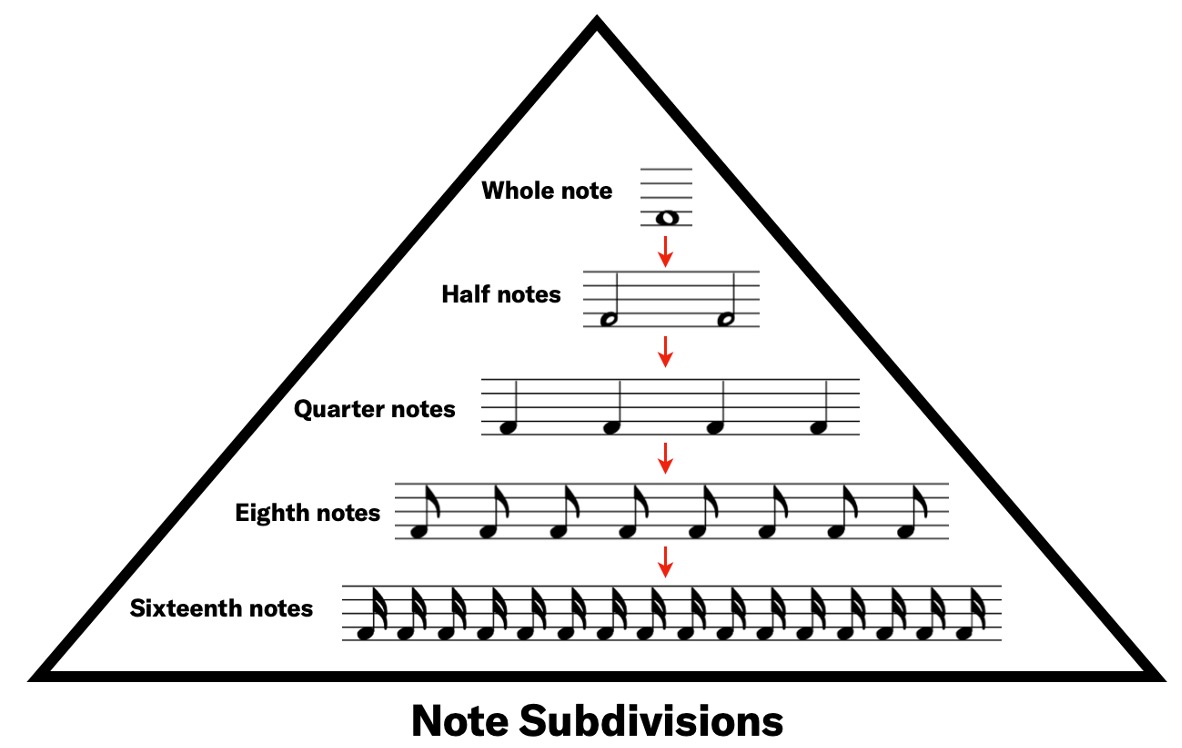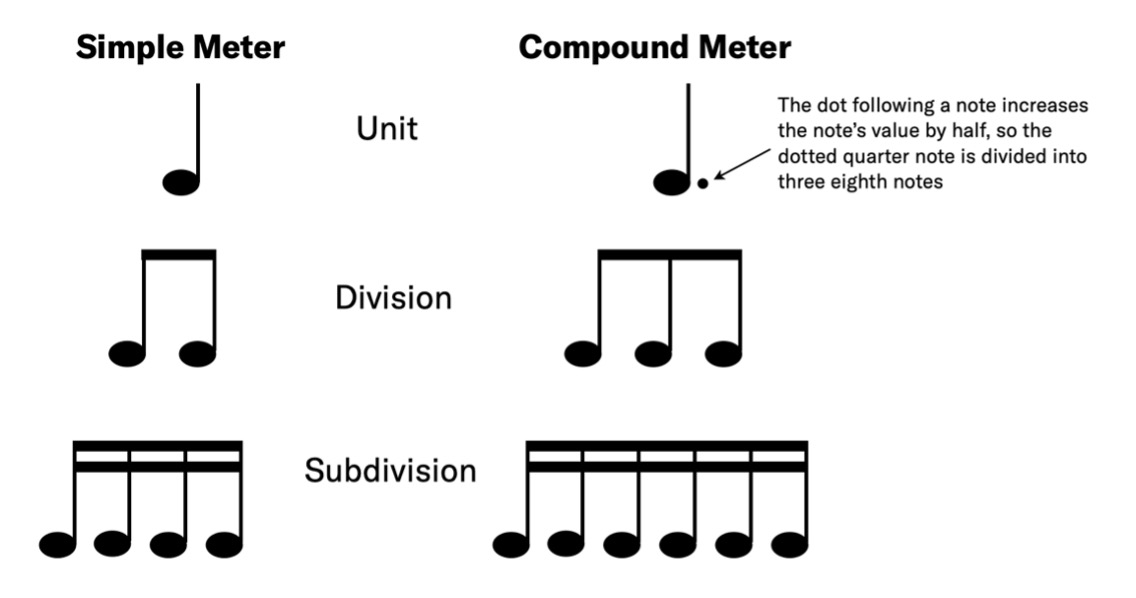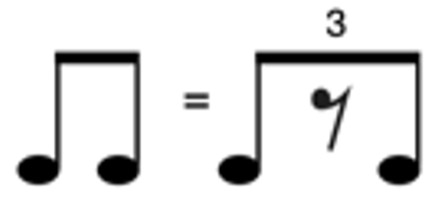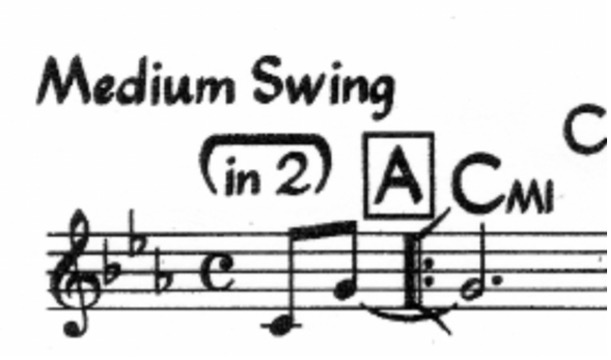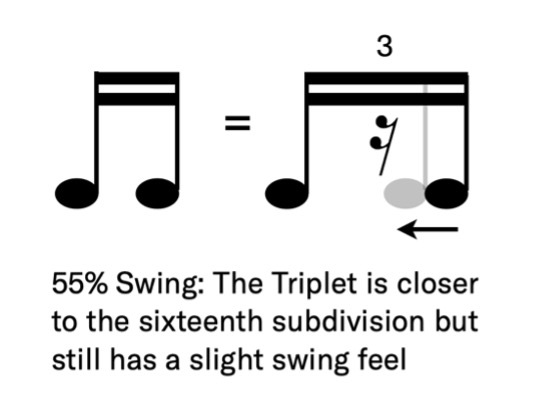Check out the other articles in this series:
Blake’s Take: Level up Your Drums 2—Active Listening
Blake’s Take: Level up Your Drums 3 – Drum Programming in MONTAGE and MODX
Blake’s Take: Level Up Your Drums 4 – Multitrack Recording to the DAW – Yamaha Synth
Introduction
I find drum programming an important and enjoyable part of music creation. Drum programming teaches you about drums as an instrument, improves your feel and groove and helps you understand rhythm. This series is designed to give you a more philosophical approach to creating musical drum tracks. Here are the topics to look for over the next few weeks:
- Basic Concepts of Rhythm: Time Signatures, Subdivisions, Tempo and Time Feel
- Active Listening: The importance of checking out and deeply listening to drummers
- Drum Programming in MONTAGE and MODX: Using the tools in Yamaha MONTAGE/MODX to create drum parts
- Drum Recording and Production: Tracking and Mixing drum parts in Cubase
Basic Concepts of Rhythm
Entire books have been written about rhythm and I am not attempting to write another one here. However, I think it’s useful to look at a few basic concepts. I’ve divided them down into the following topics:
- Notes and Time Signatures
- Tempo
- Meters, Subdivisions, Accents and Syncopation
- Time Feel
Let’s start with the basic idea of rhythm. Rhythm refers to the organization of beats as they occur in time. The word itself comes from the Greek word “rhythmos (ῥυθμός)”. The Cambridge dictionary defines rhythm as “a strong pattern of sounds, words, or musical notes used in music, poetry, and dancing”. In music this includes things like the duration of notes and rests, the recurrence of accented beats (like a back beat) how beats subdivide and the style of music (rock, jazz swing, hip hop, bossa nova, etc.). Understanding basic rhythm concepts is essential for creating cool drum parts. Notes, time signatures, tempo, meter, subdivisions, accents, syncopation and time feel are key rhythmic concepts. In this article, I’ll define each of these concepts. If you have a music theory background, these ideas will be familiar to you, but don’t worry if you haven’t. These concepts are pretty easy to understand. Plus, they highlight the beautiful symmetry of music and enhance your rhythmic understanding.
Notes and Time Signatures
Music notation identifies rhythmic placement, duration of a pitch and the number of beats in a measure. This is the first step in understanding how time is expressed.
A whole note holds for four beats. Whole notes subdivide into four quarter notes, each receiving one beat apiece. Quarter notes subdivide into Eighth notes (1/2 beat). Eighth notes subdivide into sixteen sixteenth notes (1/4 beat).
This sequence continues by adding another “flag” which doubles the number of notes. Three flags will give you 32 thirty-second notes (1/8 beat) four flags are 64 sixty-fourth notes (1/16 beat). The measure duration of each level—whole, half, quarter, eighth, sixteenth and son on—is the same at any given tempo or BPM (Beats Per Minute). Check out the subdivision graphic below:
The number of beats in a measure and the note value that gets the beat depends on the time signature. A single beat can indicate the length of a whole note, quarter note, eighth note, etc., as expressed in the time signature. Although note lengths may vary in their relationship to the beat, they do not change their relationship to each other. The subdivisions remain consistent: Two quarter notes will always be twice as fast as a half note, two eighth notes will be twice as fast as a quarter note and two sixteenth notes will always be twice as fast as two eighth notes.

Fun facts about notes: In the US we refer to these values in a fractional manner (whole, half, quarter, eighth and so on). The UK devised a naming system to express these values. A whole note is called a “semibreve”, a half note is a “minim”, a quarter note a “crochet”, an eighth note a “quaver” and a sixteenth note is a “semiquaver”. What about a 32nd note? That’s a “demisemiquaver”. And a 64th note? That’s called a “hemidemisemiquaver”. And let’s not forget very rare 128th note with five flags, the “semihemidemisemiquaver”, nor the extraordinarily rare 256th note with 6 flags and the epic name “demisemihemidemisemiquaver”!
Note subdivisions and time signatures are important aspects of rhythm. Since music is a linear art (meaning that it happens over a given time frame) how fast or slow the music unfolds is also important. That is referred to as tempo.
Tempo
Tempo is the rate of the beat or pulse of the music. Tempo is expressed in BPM. The right tempo can make all the difference. A few thoughts about Tempo:
- When working on a piece of music, practicing at a slower tempo is really helpful. I follow this rule when working on a song or practicing a difficult passage: If the tempo is 120 BPM, I set my metronome to half that, or 60 BPM. When I can play it correctly five times in a row, I’ll increase the tempo by five BPM and stay there until I can play it at that tempo correctly five times in a row. Then I’ll increase the tempo another five BPM and so on.
- When playing a musical composition, I always experiment with different tempos and feels. Unlike practicing at a slower tempo, this is something I do after I can play a piece at the written tempo. I find this unlocks new possibilities and levels of expressiveness. I’ll play a slow ballad at a fast tempo, a fast song as a ballad, an R&B tune as a jazz swing, etc. I’ll expand on this in more detail below.
- When recording a MIDI sequence, I will often record different parts at a slower tempo, especially drum parts, bass parts, guitar parts, horn parts, etc. This is one of the benefits of MIDI: you can record difficult parts at slower tempos! As you’ll see in the later parts of this series, this how I generally record my drum tracks.
Tempo is a simple concept but the impact it has on music is powerful. Want to check out a great podcast about the power of tempo? Go to this Radiolab segment, and check out the related videos of Brooklyn Philharmonic musicians playing Beethoven’s Fifth at 160 BPM (Beethoven himself marked it at 108 BPM).
Meters, Subdivisions, Accents and Syncopation
Figuring out how subdivisions relate to the overall tempo and feel is a key point in music, especially with drum parts. In music theory, rhythmic grouping is often referred to as meter. When a unit divides into two equal parts it is referred to as simple meter. When a unit is divided into three equal parts it is referred to as compound meter:
Meter relates to time signature and the terms are related and somewhat interchangeable. Examples of different simple meter are 2/4 (“duple simple”), 4/4 (“quadruple simple”) and 3/4 (“triple simple”). In each of these time signatures the unit is divisible by 2. Examples of compound meter are 6/4 or 6/8 (“duple compound”), 9/4 or 9/8 (“triple compound”), and 12/4 or 12/8 (“quadruple compound”). Finally, you have mixed meter. This is where one unit beat is compound, and one unit beat is simple. The time signatures of 5/8 and 7/8 are examples of mixed meter:
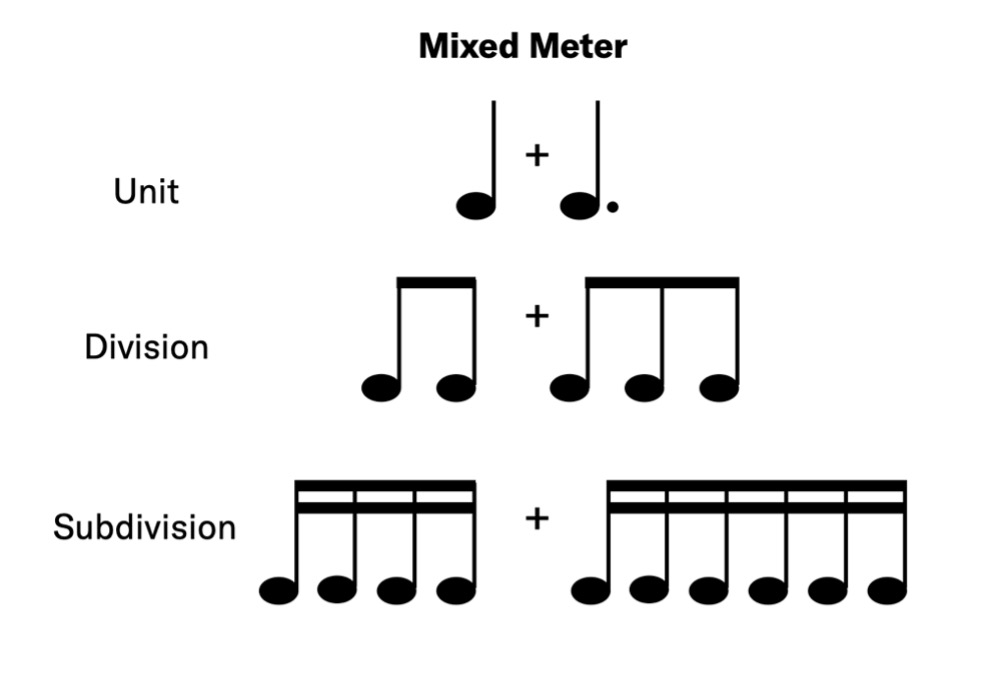
Mixed meters can be divided in different ways. 5/8 can divide as 2 + 3 or 3 + 2; 7/8 can divide as 2 + 2 + 3, 3 + 2 + 2 or 2 + 3 + 2. Often, the first beat of a unit is emphasized in mixed meter, so a 7/8 time signature subdivided as 2 + 2 + 3 could be counted “ONE two, ONE two, ONE two three” where beat ONE is accentuated. This brings up another important part of rhythm: accents. Accents are beats played with more emphasis to give meter forward momentum and stylistic identity. Often the first beat gets the strongest accent and provides a pulse. In rock music, the snare drum outlines beats 2 and 4 and provide a backbeat.
Accents can also happen on divisions and subdivisions and can be unexpected. This is called syncopation. Many genres of music feature syncopated rhythms like jazz, R&B funk, rock, etc. Syncopation adds variety to an otherwise unified rhythmic pulse.
Time Feel
With these basic rhythmic concepts in mind, let’s move on to the concept of swing. Swing has to do with the performance of the beat division. In the most basic sense:
- A straight feel is when the quarter note subdivides into two eighth notes. You may have heard the term “straight eighth notes”. This implies that the eighth notes are played evenly.
- A swing feel is when the quarter note subdivides into triplets, but the second note of the triplet is not played. Basically, it could be noted thusly:
In a musical score swing eighth notes are not written like the graphic above which merely approximates the feel of swing eighth notes. The word “swing” is written at the top of the score often with a modifier like “medium” or “fast.” Check out the example below:
The eighth notes are played with a swing feel because of the instruction “Medium Swing. “In 2” is also given, meaning that the feel is Medium Swing and the bassist will play on beats one and three until “in 4” or “bass walks” is added.
There are also gradations between a straight and swing feel. As tempo increases, the “swung” eighth note often “straightens out” or moves closer to the actual eight note value. You may have seen the term “swing rate” or “swing amount” in the quantize section of a DAW. This allows you to adjust the amount of swing. That parameter is called “Swing Rate” in MODX and MONTAGE. I’ll explore all this in detail in subsequent articles. For now, let’s check out a few examples illustrating the difference between a straight and a swing feel.
First up is a basic straight feel rock beat:
This is a four-measure beat played twice. The hi-hat outlines the eighth note subdivision, the snare plays on beats two and four and the kick drum plays a two-measure phrase alternating with the snare. I played the open high-hat on the first beat of measure two and four to add a bit of variety. Here is what it looks like:
Next is the exact same drum pattern with swing applied. The swing rate is set to the triplet subdivision. In most DAWs, this rate is expressed as a percentage. Exact straight time is expressed as 50%. The example below the swing rate is right at the triplet, or 66%:
Again, all that is different is the feel, but what a difference! You might wonder how one would transcribe this. The answer is exactly the same way as the straight feel but with an instruction like “swing” or more precisely “rock shuffle” because this groove has a snare backbeat. “Shuffle” is a word that conveys a similar vibe as “swing”.
I think of a shuffle feel as something that has a stronger backbeat, more emphasis on the hi-hat defining the subdivision and less syncopation than swing. Swing feels also have more emphasis on the ride cymbal outlining the subdivision, too. Time feel has such a profound effect but it’s difficult to convey in musical notation.
There is a key point to observe in this simple drum pattern: Kick-snare interplay is a fundamental aspect of how drummers play. The interplay of all the drum kit components—kick, snare, toms, hi-hat, cymbals—is important too. Great drummers have incredible coordination. They practice four-limb independence and creative interplay between all parts of the drum kit. It is one of the reasons great drummers are so fun to watch!
Now let’s take a look and listen at a second drum pattern with an eighth note subdivision. This is a four-measure swing pattern (swing feel set at 66%, right at the triplet subdivision):
Transcribed it looks like this:
Now listen to the exact same drum pattern but this time set to straight feel:
That’s quite a difference. Again, time feel and subdivision is a powerful thing. That simple change from swing to a straight feel makes a huge musical difference.
Now let’s take a look at sixteenth note subdivisions. Again, the tempo remains the same at 100 bpm, but the overall feel is “busier” since the subdivision is doubled from the eighth note. The straight feel drum pattern below is a four-measure groove played twice, features the hi-hat outlining the sixteenth subdivision, snare on beats two and four and the kick drum both accentuating the beat one and providing some syncopation. This is a fairly standard straight funk groove:
Here is the transcription:
In the next two examples, I’ve changed the feel from straight to swing using different percentages. As with the previous examples the notes remain the same. The first version is the swing feel is set a 66%, or right at the sixteenth note triplet subdivision:
The sixteenth note subdivision coupled with a 66% swing rate might feel unnatural. This relates to what I mentioned above: As tempo increases, the swing feel often “straightens out” or moves closer to the straight subdivision. Although the tempo didn’t increase the subdivision doubled, so a swing rate of 66% might be too much at this tempo. I still want the lilt of the swing but not as much, so I moved the swing rate down to 55%. This moves the triplet closer to the sixteenth note subdivision but not so close that it entirely removes the swing feel:
Here is what it sounds like:
Again, all this is transcribed the same way. In a musical score an instruction saying “strong swing (or shuffle) feel” might be given in the first example and “slight swing (or shuffle) feel” in the second to covey the different feels.
In most of the examples, the subdivisions were clearly defined by design. I tried to keep syncopated accents to a minimum and focused on consistent beat definition. The final examples add additional syncopation and don’t clearly outline beats two and four. The first example is an eight-measure straight feel played twice:
Here is the transcription:
The syncopated accents give this pattern an entirely different vibe. The feel changes from the previous funk groove examples to a jazz fusion feel. This happens because of the additional syncopation. I change up the hi-hat pattern, add more open hi-hat accents and I remove the kick drum from the downbeat in certain measures. All of these elements open up the feel and variety making the overall groove less predictable.
Now check out the same pattern with a swing of 55% added:
I think the 55% swing is even more desirable for this drum pattern because of the syncopated accents. It’s a busier beat overall and a 66% swing wouldn’t sound as good to me. The lighter swing percentage gives this drum pattern a hip buoyancy. What do you think?
There are certainly other factors involved in great time feel. Where a drummer sits in the underlying time—on top of, in the center of, or behind the beat—is another crucial part of a great drum groove. How space and dynamics are used play an important role too. I’ll explore these concepts and more in upcoming articles of this series.
In the next installment I’ll introduce the concept of active listening and share a few videos from our world-class drum artists. Understanding basic rhythmic concepts is certainly helpful but watching and deeply listening to great drummers play the drums is just as important.
Stay tuned for the next article!

